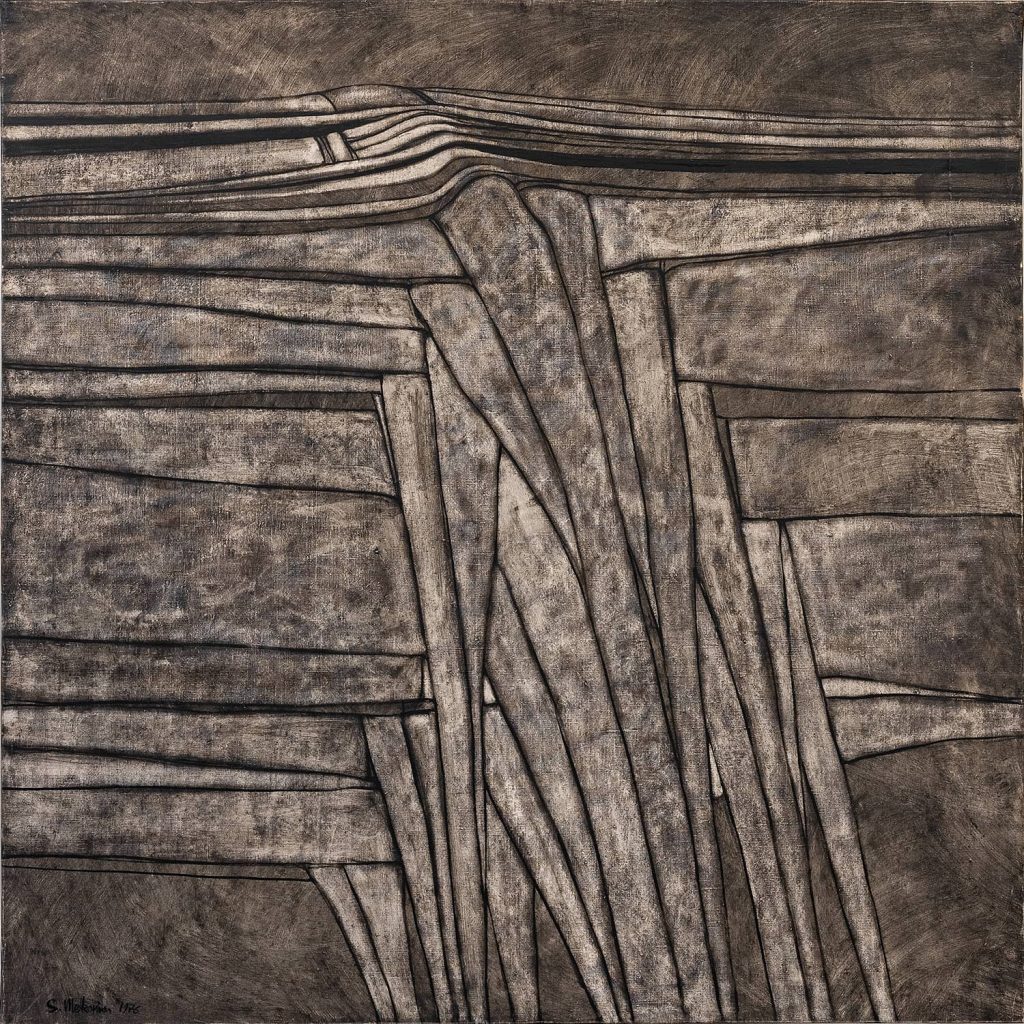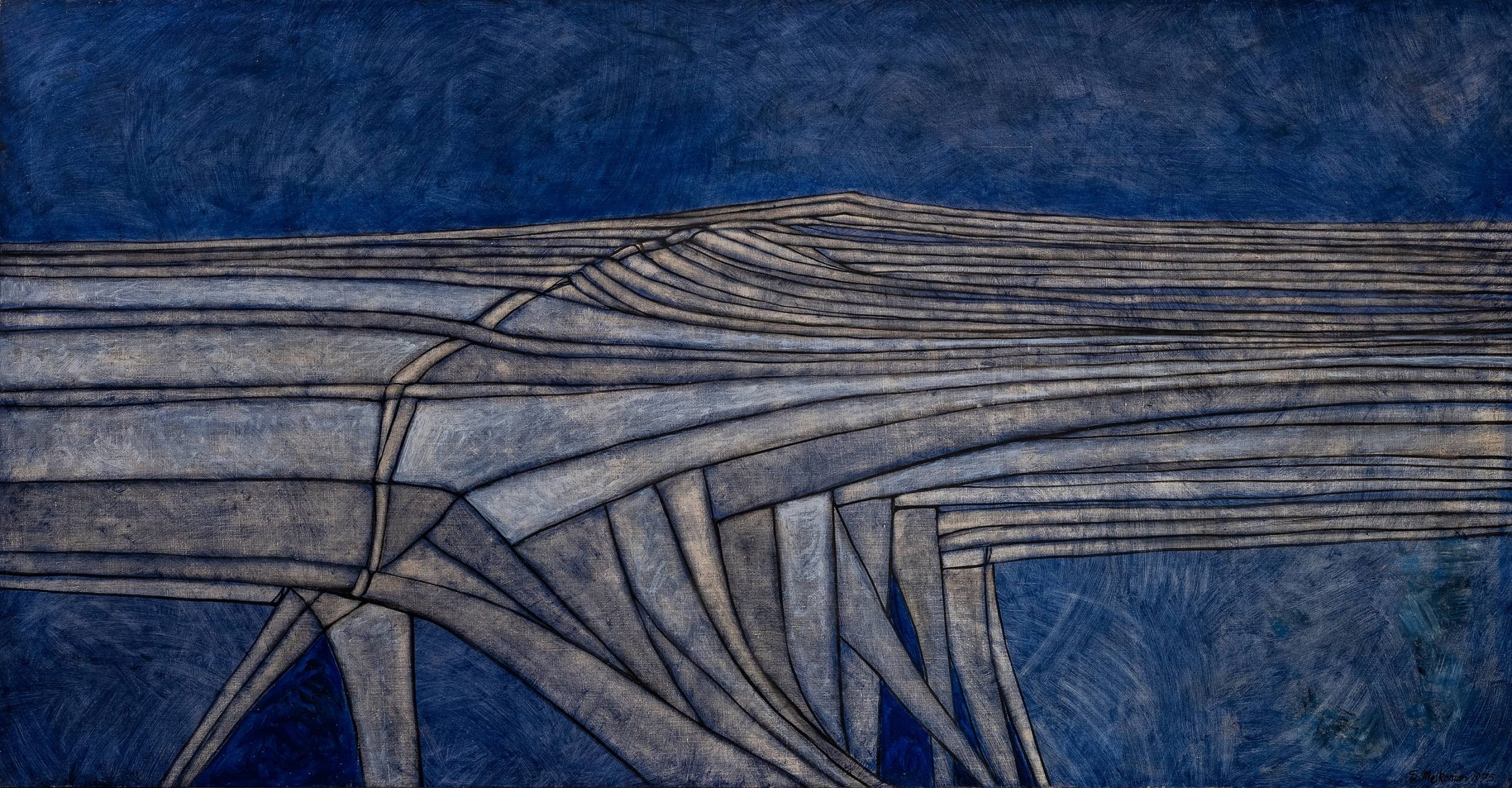Sirak Melkonian, Untitled, 110×210 cm, oil on canvas, 1975
Date:
2023/03/05
Artists:
Sirak Melkonian, Shahla Hosseini, Mohammad-Hossein Emad, Mojé Assefjah
Keeping detached from the hullabaloo of the outer world and external influences to a degree without being isolated, has always been an acute and perceptive practice among creators. Commonly, the more channeled their interrelations are, the more enhanced their creations become as their perceptions and approaches pass through their conceptual filter and therefore find a much more bespoke and individual tone.
In “Dual Simplicity”, four Iranian artists coming from three distinct generations and residing in three different continents share this intended yet organic disconnection; still with an absolute different end result. Each one’s personal interpretation of their inner and outer worlds, along with the visual language they have created have made them influential figures in their own practice.
In this exhibition, all works share visual and conceptual qualities that open a window to one of the most authentic angles of Iran’s contemporary movement that took shape in the 1960s and has continued on in the work of many contemporary artists. The non-narrative and non-representational characteristic of the works with their limited color palette lay emphasis on the fringe art movement that has always had a strong say compared to the more exhibited examples of mainstream Iranian modern and contemporary art. The idea has been realized through the work of three celebrated artists, Sirak Melkonian, Shahla Hosseini, Mohammad Hossein Emad, whose work span over four decades along with an influential representative of a relatively younger generation, Moje Assefjah, with a comparable approach despite her different sociopolitical and cultural life experiences.
Sirak Melkonian, a renowned artist among the first generation of Iranian modern painters whose minimal approach towards the depiction of nature has made his abstract and stylized compositions quite prominent. He always creates a formal and consistent balance in his paintings with a focus on form and geometry more than color. In the 1970s, the era in which the two exhibited works on display were created, Melkonian who was in his 40s started getting international recognition besides playing a significant role in introducing and promoting the Conceptual Art movement in Iran. This dominating art movement of the time was introduced to the Iranian art scene at the Tehran International Art Fair in 1974 through the activities of the Azad Art Group, co-founded by Melkonian and six other prominent modernist artists.
Nearly three decades later, another Iranian artist belonging to almost two generations after Melkonian, Moje Assefjah, in a similar way, created works that evoked landscapes with a strong feeling of spatiality. In the body of work for which they had both gained recognition, a major correspondence could be recognized: the makeup of the representational and abstract were integrated. Although Melkonian’s canvases are mostly made up of straight lines and sharp-edged geometric shapes and Assefjah’s visual vocabulary majorly includes flowing twirls and liable thick and layered brushstrokes, they both demonstrate their figurative yet abstract personal perception of nature with no traces of branches, leaves or any other lifelike structures commonly seen in the schools of Persian Painting.
Shahla Hosseini who was exposed to both natural and industrial environments during her childhood due to her father’s work on the one hand, and privileged enough to start her travels and visiting major European museums and art institutions during her teenage years, developed her aesthetic taste and language at a very early stage. As a researcher working with collected objects such as fossils, metal strings and other found natural and industrial objects, Hosseini has always been devoted to self-expression, persisting to communicating with her surroundings through an artistic ritual and practice without any nostalgic feelings towards the past. Besides painting professionally for almost half a century now, she has created boxes and installations throughout these years as a form of imaginative and insightful interpretation of her inner thoughts and feelings and in response to her environment. Throughout all these years, the more excessive global and local tensions have become, the lighter, whiter and more neutral her works have turned into in order to balance the pressure she feels from her surroundings. Her signature style in different bodies of her work is to visualize a delicate balance between life and death, existence and non-existence, mostly through metaphoric depictions of space with a special focus on texture.
Another artist from the same generation with a comparable approach towards artistic expression is Mohammad-Hossein Emad whose minimal and nonrepresentational sculptures have become internationally celebrated and collected by art lovers and esteemed collectors. One of the most distinguished and established contemporary Iranian sculptors, Emad’s unique pieces exemplify his inner contemplative journeys of perception, materialized in abstract yet semi-figurative forms. Like Shahla Hosseini, Emad’s vision has always been a balance, realized by laying emphasis on voids and materiality, light and darkness, rigidity and lightness, and solidity and flow as in the opposite powers that make up the forces of nature and life. This core concept in Emad’s visual creations is beautifully taken shape in his hanging or standing sculptures.
The conceptual cohesion in this four-person exhibition could also be visually characterized by dissimilar works of art with similar perspectives, approaches and sources of inspiration. Gender identities and differences have also had a say in this assortment. Among the two more figurative abstract painters for instance, Melkonian and Assefjah, who are both inspired extrovertly by nature, a totally feminine composition with delicate lines and limited pastel palette and a masculine one with limited color palette and sharp and linear shapes are discerned. On the other hand, the more conceptually-driven artists, Hosseini and Emad, have introvertly put their personal lives and senses into shape with a focus on balance, but in a more intimate feminine visualization in Shahla Hosseini’s work and a more generalized interpretation in Emad’s sculptures.
Maryam Majd, February 2023
Mojé Assefjah L’entrata (Entrance) egg tempera on canvas 220×170 cm 2012
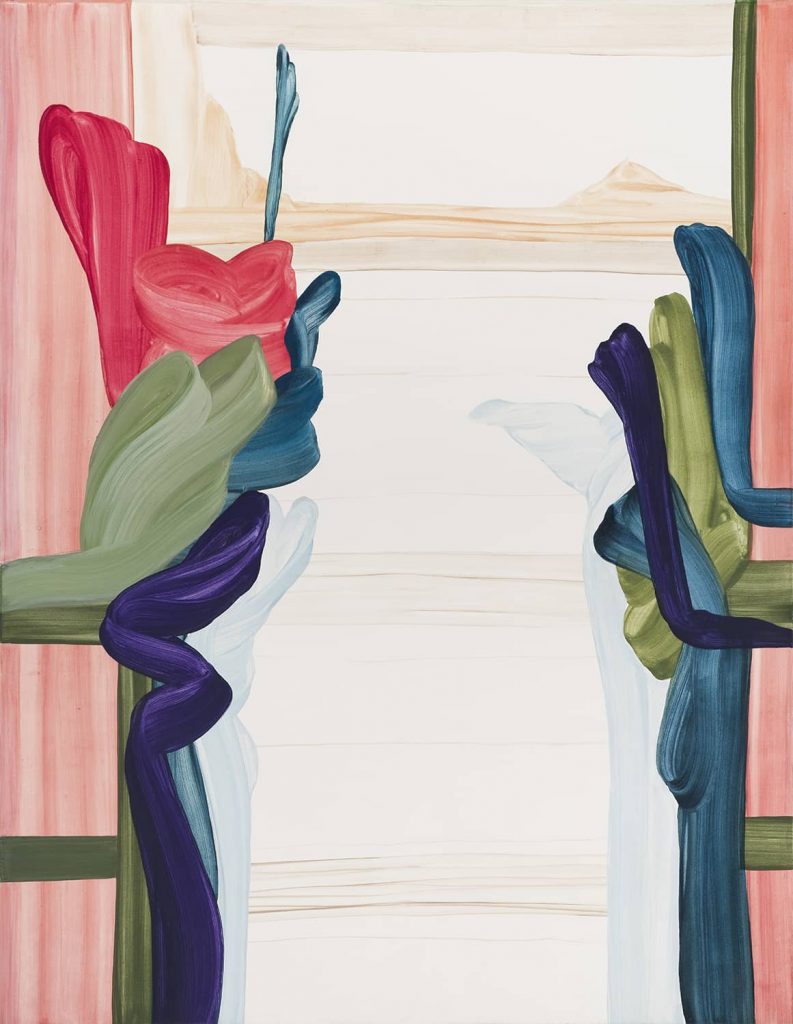
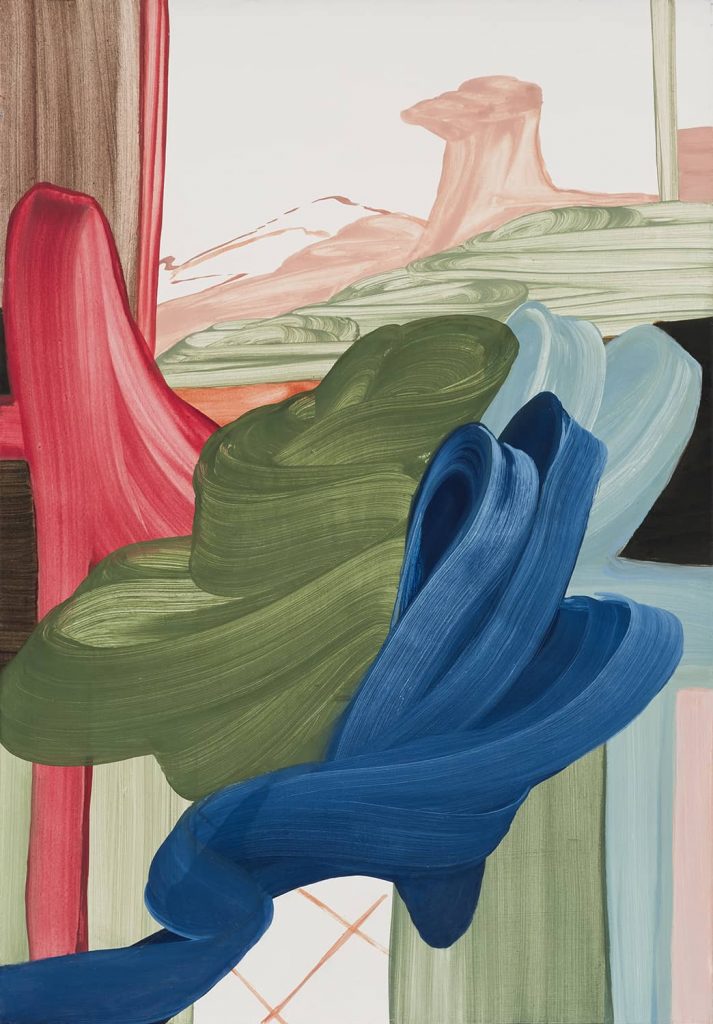
Mojé Assefjah
Manzareh
egg tempera on canvas
100×70 cm
2010
Mojé Assefjah
l‘alba facceva occhio (Break of Down)
egg tempera on canvas
160×125 cm
2015

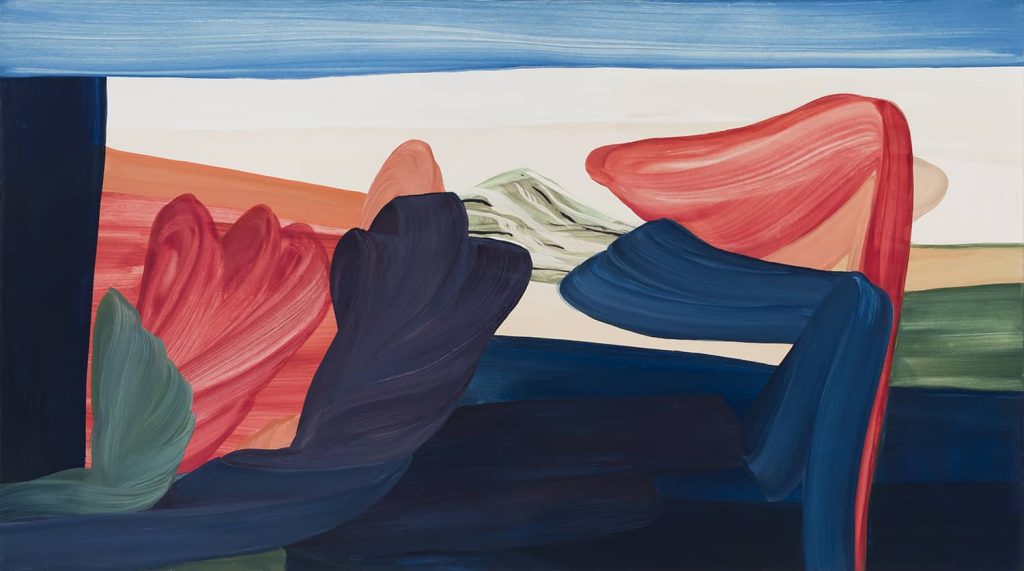
Mojé Assefjah
Plateau
egg tempera on canvas
90×160 cm
2008
Mohammad-Hossein Emad Crave 120x120x80 cm Wood 2022
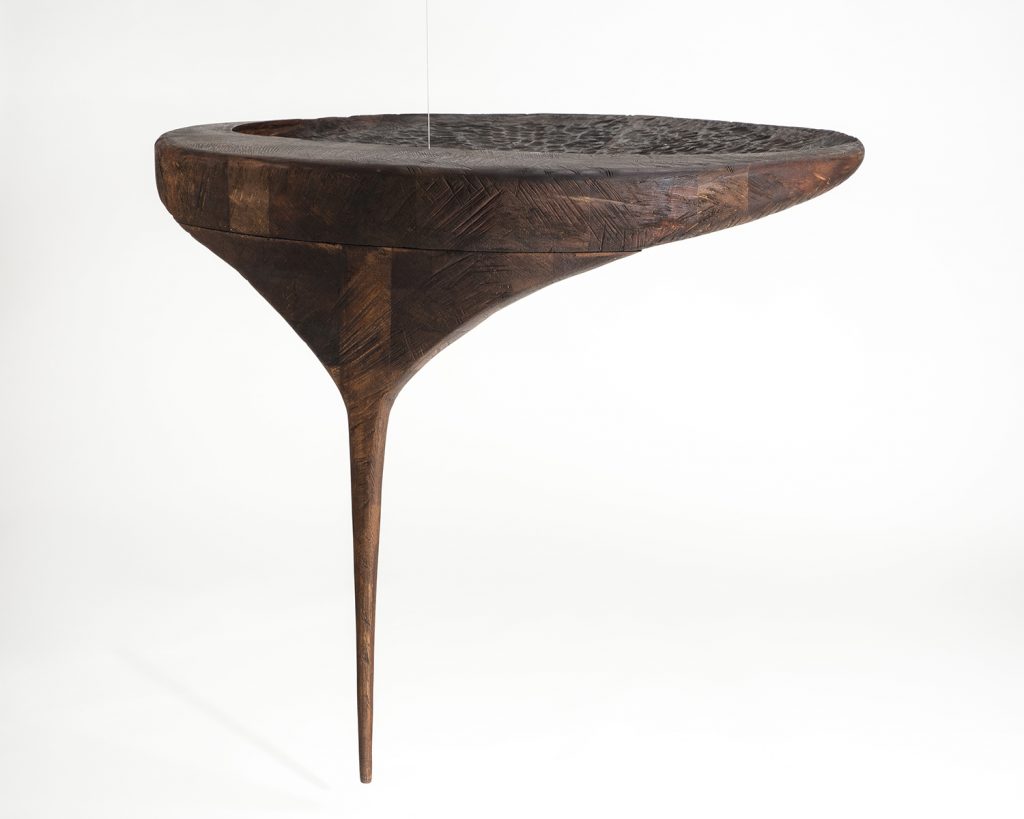
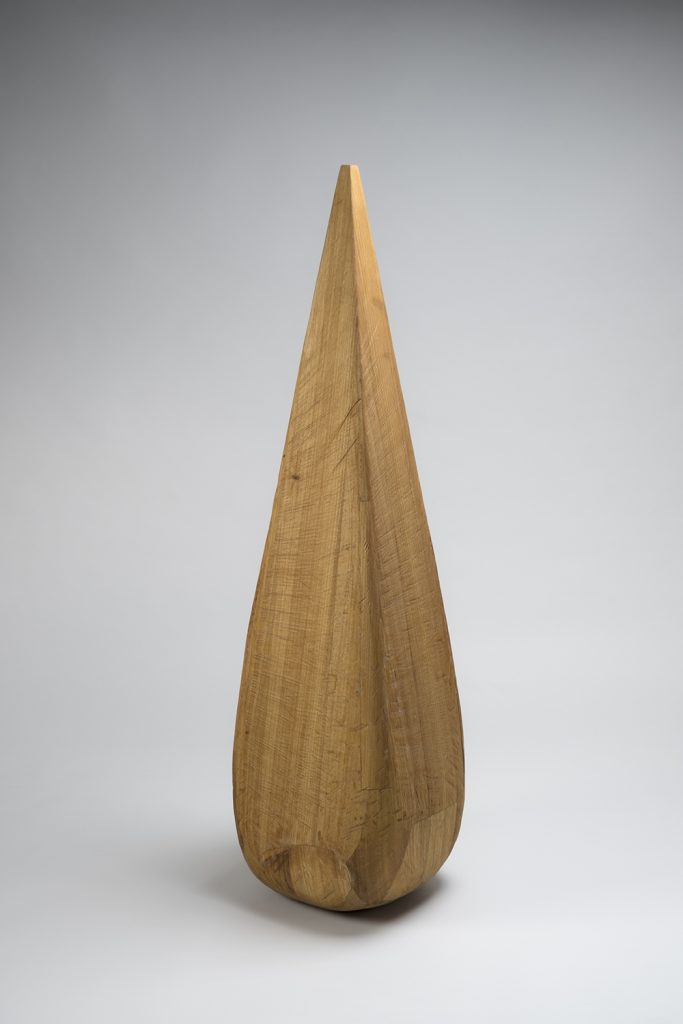
Mohammad-Hossein Emad
Cedar
135x40x40 cm
Wood
2022
Shahla Hosseini
Untitled
100×180 cm
acrylic, fabric and thread on canvas
2011
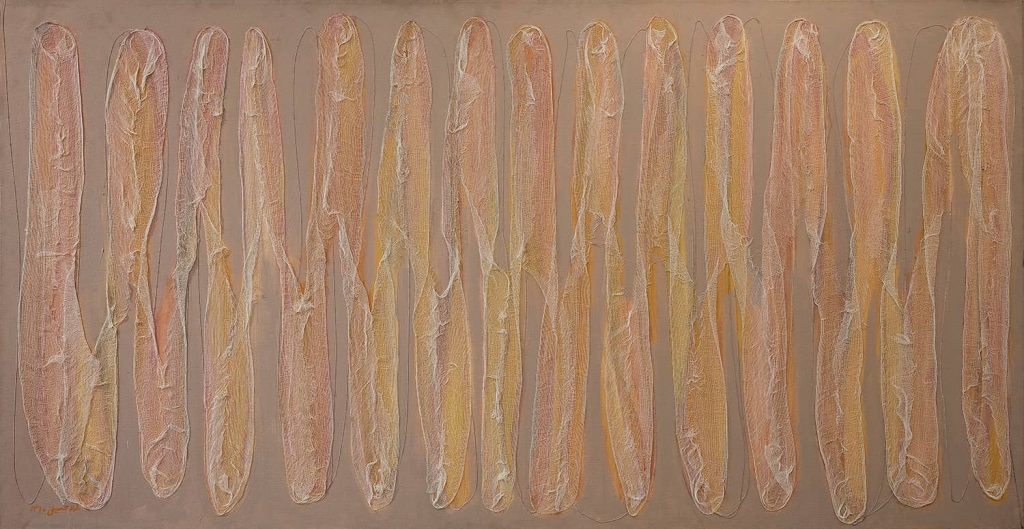
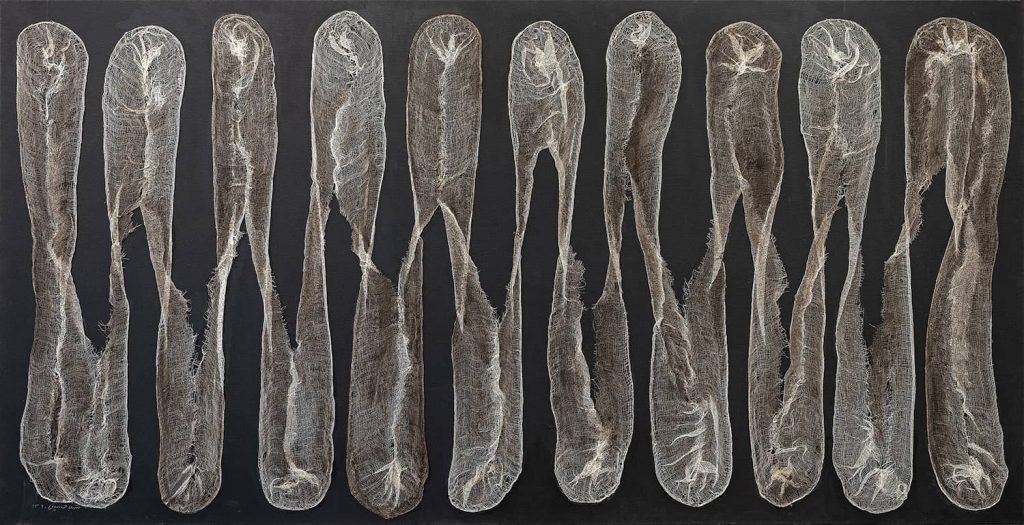
Untitled
100×180 cm
acrylic, fabric and thread on canvas
2011
Shahla Hosseini
Untitled
100×180 cm
acrylic, fabric and thread on canvas
2012
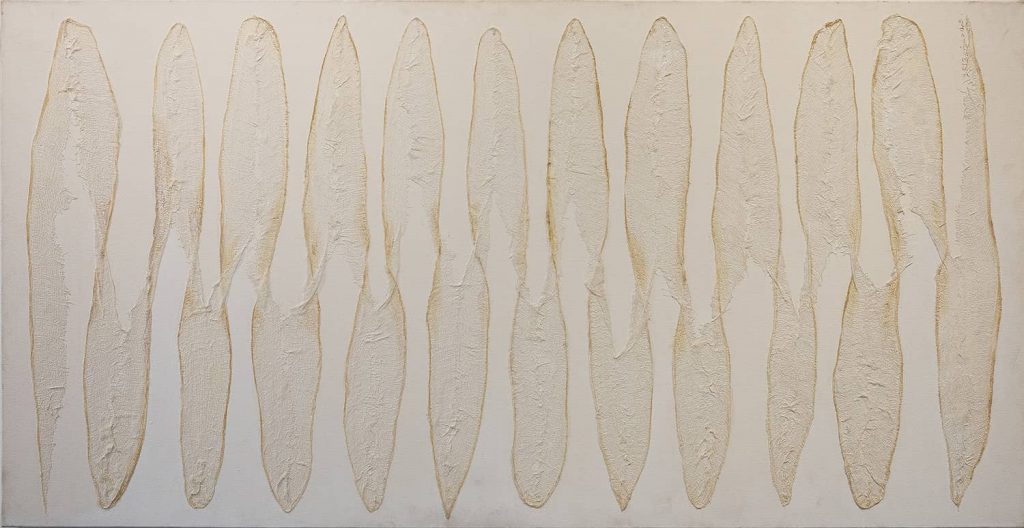
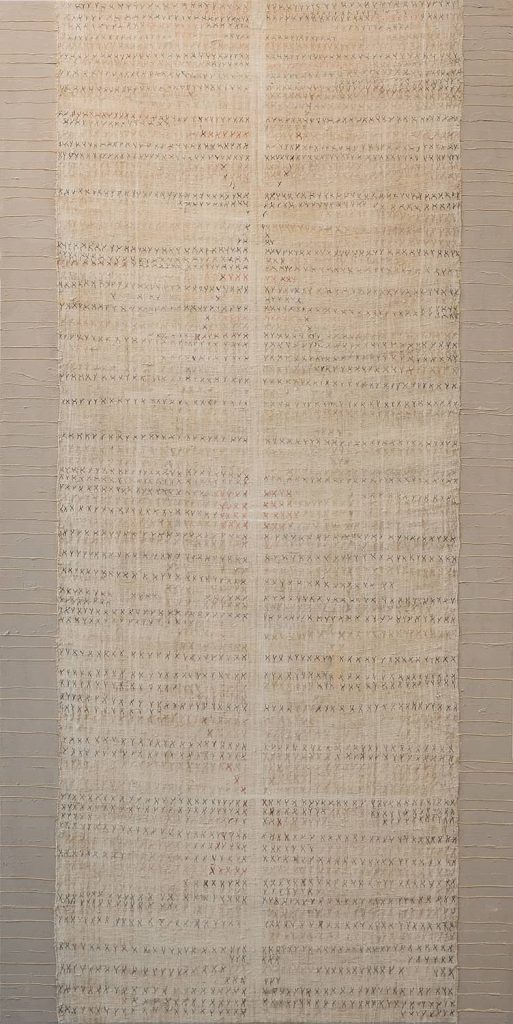
Shahla Hosseini
Untitled
150×80 cm
acrylic, fabric, thread and ink on canvas
2011
Shahla Hosseini
Untitled
150×80 cm
acrylic, fabric, thread and ink on canvas
2011
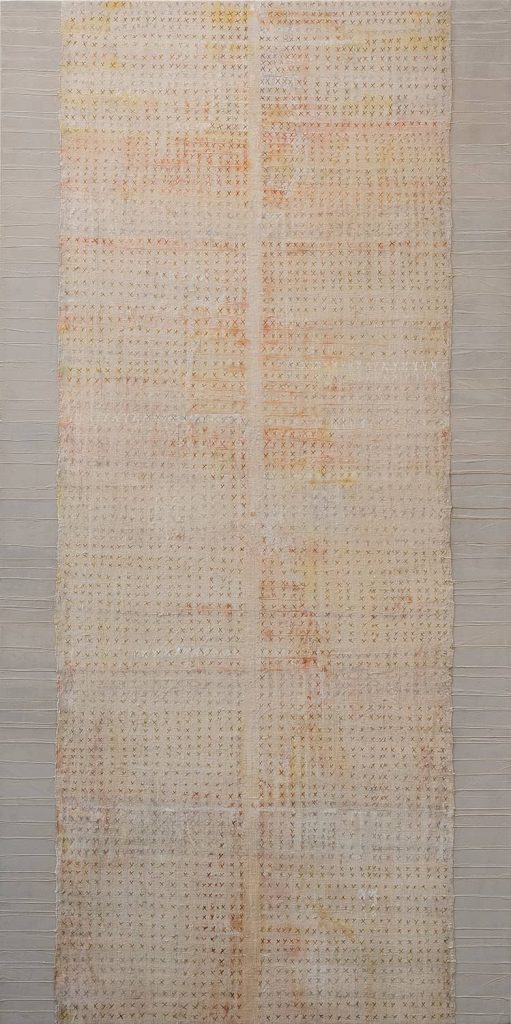

Sirak Melkonian
Untitled
110×210 cm
oil on canvas
1975
Sirak Melkonian
Untitled
129×129 cm
oil on canvas
1976
